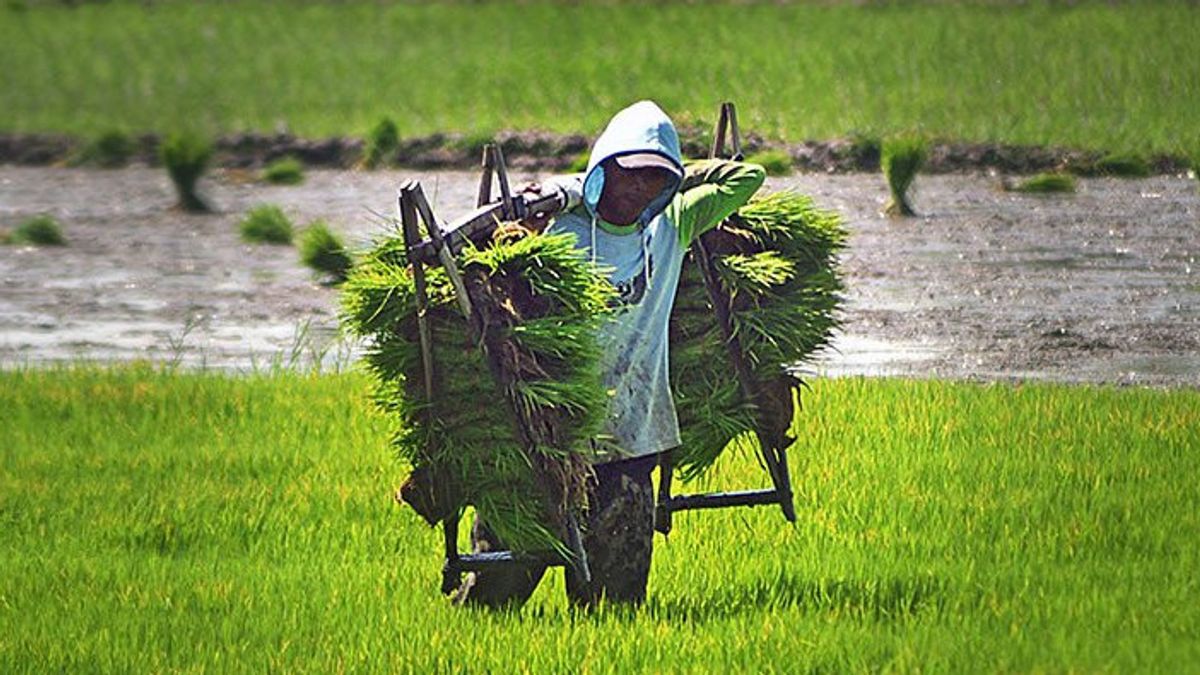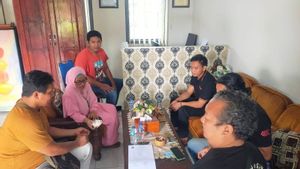JAKARTA - The Bogor Agricultural University (IPB) has so far 107 varieties of rice and wheat substitute plants as a solution to increase rice food production amid crisis challenges due to climate change and the unstable economic situation of the war effects of Russia and Ukraine.
"So, indeed the first, this food crisis is a threat, for what reason, because climate change factors and the second is a geopolitical factor because Russia and Ukraine have an increase in energy (price) and increase in fertilizer prices," explained IPB University Chancellor Arif Satria in Bogor, quoted from Antara, Tuesday, January 10.
Arif said that indeed IPB had analyzed that it would have an impact on domestic food availability, especially rice staples if Indonesia did not immediately take concrete steps to increase productivity.
"So that the good way to increase productivity, one is superior variety technology and IPB already has 107 superior varieties, I conveyed earlier, for dry land, our rice fields can already be done," he said.
In addition, Indonesia has produced local flour products as a substitute for wheat whose imports are increasing over time.
Arif said that in 2010 the import of wheat from abroad was around four million tons, now it is almost 10 to 11 million tons. This means that the increase in 10 years is exponential.
"Well, what does that mean, people have switched to imported products. Now the challenge is how the Indonesian government must protect local products, so that this local product becomes an option for wheat substitution," he said.
Arif also conveyed that local products that can be like large grains, there are sago, ganyong, sukun, sorghum and many others that need a touch of higher education through increased productivity.
However, it doesn't end there, said Arif, like it or not, Indonesia's food production must reduce the number of food loss (food lost) and food waste (food waste) which is recorded to be quite high.
"Our 'Food lost' is 184 kilograms per year per capita. What does that mean? Food is scattered, food is thrown into waste, even according to our FHO, even the largest in the world is 300 kilograms per capita per year after Saudi Arabia with 400 kilograms per capita per year. but our calculation (for Indonesia) is 184 tons per capita per year," he said.
According to him, the cause of the problem of food lost and food waste in Indonesia is the first example for rice, unprecision harvesting, so that the scattered grain reaches 11 percent, then still entering rice mills, the damaged grain is a percentage, so it needs improvement.
Furthermore, the second is correct from the rice mill, meaning there needs to be revitalization of rice mills, so it will increase the availability of food nationally.
That way, he continued, if there is 11 percent terje tercer then it becomes only five percent, it means that at least there is an extraordinary additional six percent of Indonesia's rice food reserves.
Then the third is that there needs to be immediate assistance from farmers, because new varieties require new techniques, new technologies require new cultivation technology and climate change requires new adaptation methods.
"So, I am still optimistic (the problem), we can still overcome our agriculture in this way (overcoming food lost and food waste," he said.
The English, Chinese, Japanese, Arabic, and French versions are automatically generated by the AI. So there may still be inaccuracies in translating, please always see Indonesian as our main language. (system supported by DigitalSiber.id)








